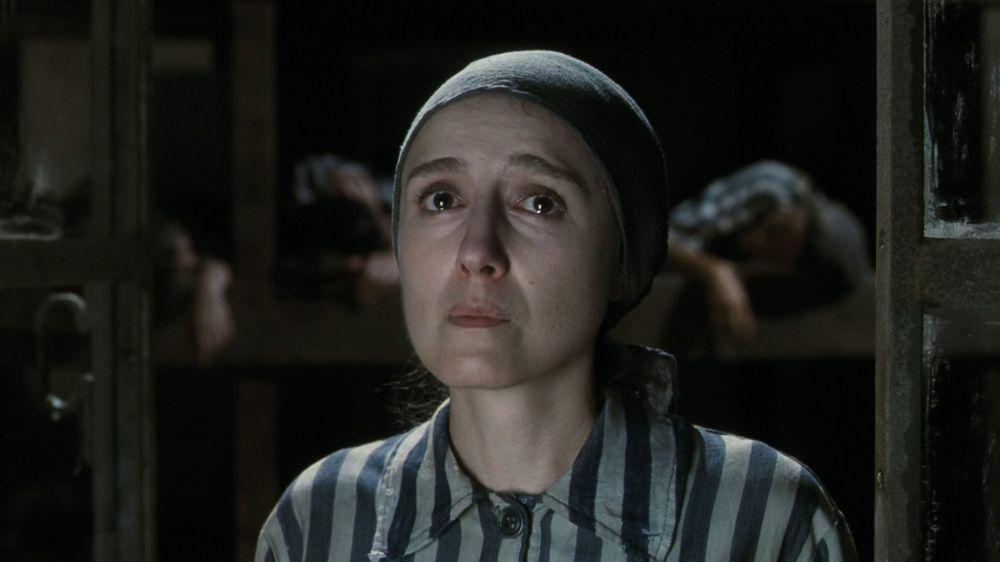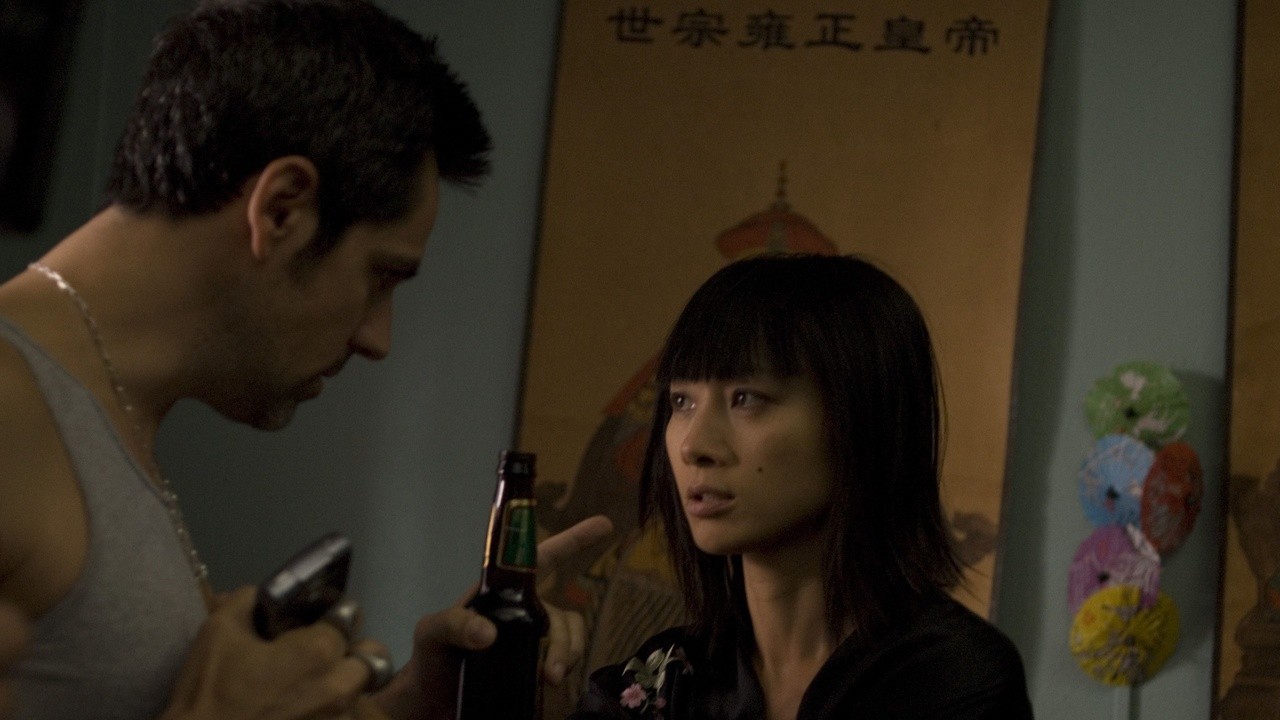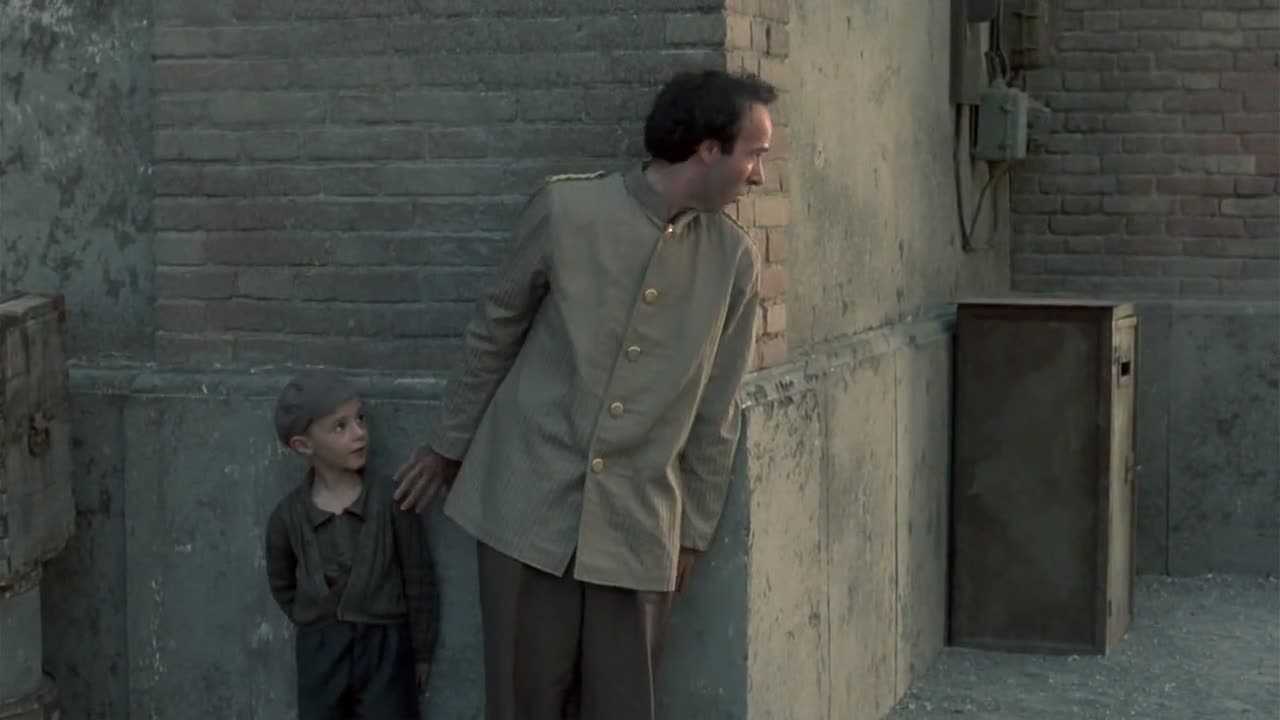Iconic Films Representing “A Beautiful Life”
The concept of “a beautiful life” is subjective and multifaceted, varying across cultures and individual experiences. However, certain films have resonated with audiences for their compelling portrayals of joy, fulfillment, and meaningful connections, even amidst hardship. These films, often celebrated as classics, offer diverse perspectives on what constitutes a beautiful life, reflecting the evolving societal values and cinematic techniques throughout cinematic history. The following selection showcases a range of approaches to this enduring theme.
Films Depicting “A Beautiful Life”: Chronological Overview
The following films, selected for their enduring popularity and diverse representations of “a beautiful life,” demonstrate how the cinematic portrayal of this theme has evolved over time, reflecting changing social values and artistic expressions. Each film offers unique insights into the complexities of human experience and the pursuit of happiness.
It’s a Wonderful Life (1946)
This Frank Capra classic follows George Bailey, a man contemplating suicide on Christmas Eve. An angel intervenes, showing him what life would have been like without him, highlighting the profound impact he had on his community and loved ones. The film’s depiction of a beautiful life focuses on the ripple effect of kindness, selflessness, and the importance of family and community bonds. The climactic scene, where the town rallies to save George, embodies the power of collective love and support in creating a meaningful existence. The film emphasizes the inherent goodness in people and the importance of appreciating the seemingly ordinary moments of life.
Roman Holiday (1953)
This romantic comedy showcases a princess escaping her royal duties for a day in Rome. Audrey Hepburn’s charming portrayal of Ann, a princess yearning for freedom and normalcy, highlights the beauty of spontaneous adventures and genuine human connection. The film depicts a beautiful life as one filled with unexpected joy, simple pleasures, and the transformative power of love. The fleeting nature of their romance underscores the preciousness of these moments and the enduring memory they create. The film’s visual beauty, capturing the charm of Rome, further enhances the sense of a life lived fully and joyfully.
The Sound of Music (1965)
This beloved musical depicts the story of Maria, a young woman who becomes a governess to the seven children of a widowed naval captain. Through music and love, she transforms their lives and finds her own happiness. The film’s portrayal of a beautiful life centers on the importance of family, faith, and the power of music to bring people together. The stunning visuals of the Austrian Alps, coupled with the uplifting musical score, create a sense of idyllic beauty and harmony. The film celebrates the simple joys of life, the strength of the human spirit, and the power of love to overcome adversity.
Cinema Paradiso (1988)
This Italian film tells the story of Salvatore, a filmmaker who reminisces about his childhood in a small Sicilian town and his relationship with Alfredo, the projectionist at the local cinema. The film beautifully captures the nostalgia of simpler times and the enduring power of cinema as a form of escapism and emotional connection. The beautiful life depicted here is one rooted in community, shared experiences, and the pursuit of artistic passion. The film celebrates the passage of time and the enduring power of memory, highlighting the importance of cherishing life’s moments, both big and small.
Amelie (2001)
This whimsical French film follows Amelie Poulain, a young waitress in Montmartre, Paris, who sets out to secretly improve the lives of those around her. The film depicts a beautiful life as one filled with kindness, creativity, and a childlike wonder. The vibrant visuals of Paris, the quirky characters, and the film’s overall tone create a sense of enchantment and optimism. Amelie’s actions, however small, demonstrate the profound impact one person can have on the lives of others, suggesting that a beautiful life is often found in the simple act of bringing joy to others.
Character Archetypes in “A Beautiful Life” Films

Source: idntimes.com
Classic films depicting “a beautiful life” often utilize recurring character archetypes to explore themes of love, happiness, and fulfillment. These archetypes, while varying in specifics across different films, share core characteristics that resonate with audiences and contribute to the overall narrative’s emotional impact. The consistent presence of these archetypes across diverse cinematic landscapes highlights their enduring power in shaping our understanding of what constitutes a “beautiful life” on screen.
The following sections will examine three common archetypes: the Idealist, the Achiever, and the Mentor. We will analyze their roles and contributions to the narrative, highlighting how their interactions and individual journeys shape the overall portrayal of a beautiful life.
The Idealist
The Idealist character archetype embodies unwavering optimism, often pursuing a seemingly unattainable dream or goal. This character is driven by a strong moral compass and a belief in the inherent goodness of humanity. Their journey is often marked by challenges and setbacks, yet their persistent hope and belief in their vision inspire those around them. The Idealist’s unwavering faith in a positive outcome contributes significantly to the film’s overall message of hope and perseverance.
- Defining Characteristics: Unwavering optimism, strong moral compass, unwavering belief in their vision, often faces significant challenges, inspires others through perseverance.
- Examples: Consider the character of Atticus Finch in “To Kill a Mockingbird,” whose unwavering commitment to justice despite facing societal prejudice exemplifies the Idealist archetype. Similarly, the protagonist in “It’s a Wonderful Life,” George Bailey, embodies this archetype through his dedication to his community and family, even when facing immense personal hardship.
The Achiever
The Achiever archetype represents ambition and the pursuit of success, often material or professional. However, this archetype frequently grapples with the potential trade-offs between personal fulfillment and the relentless pursuit of goals. The Achiever’s journey often explores the complexities of ambition, highlighting the potential for both happiness and disillusionment. The portrayal of the Achiever allows the film to explore the multifaceted nature of success and its impact on one’s overall well-being.
- Defining Characteristics: Driven, ambitious, focused on achievement (material or professional), often faces dilemmas regarding work-life balance, may experience both triumph and disillusionment.
- Examples: In “The Graduate,” Benjamin Braddock’s initial pursuit of material success showcases the Achiever, while his later questioning of his choices reveals the complexities of this archetype. Similarly, the character of Willy Loman in “Death of a Salesman,” though ultimately tragic, highlights the relentless pursuit of the American Dream and its potential pitfalls.
The Mentor
The Mentor archetype provides guidance, wisdom, and support to the protagonist. This character often embodies a deep understanding of life’s complexities and serves as a source of inspiration and strength. The Mentor’s presence often serves as a catalyst for growth and self-discovery within the protagonist’s journey. Their wisdom and experience help the protagonist navigate challenges and ultimately achieve a sense of fulfillment. Their role is crucial in reinforcing the film’s message about the importance of mentorship and the power of human connection.
- Defining Characteristics: Wise, experienced, provides guidance and support, serves as a source of inspiration, fosters growth and self-discovery in the protagonist.
- Examples: Obi-Wan Kenobi in “Star Wars” serves as a classic example of the wise and guiding Mentor. Similarly, the character of Gandalf in “The Lord of the Rings” provides crucial guidance and support to Frodo throughout his perilous journey.
Visual and Audio Elements in Portraying “A Beautiful Life”: A Beautiful Life Classic Movie

Source: mubicdn.net
Classic films portraying “a beautiful life” often leverage sophisticated visual and audio techniques to immerse the audience in the narrative and evoke a profound emotional response. These elements work in concert to create a sense of wonder, joy, and even poignant melancholy, reflecting the multifaceted nature of life itself. The careful orchestration of these elements is crucial in shaping the viewer’s perception and understanding of the characters’ journeys and the themes explored within the film.
The visual techniques employed in these films are instrumental in establishing the aesthetic and emotional tone.
Cinematography and Mise-en-scène in “A Beautiful Life” Films
Cinematography plays a pivotal role in shaping the visual narrative of “a beautiful life.” Wide shots, for instance, might be used to capture expansive landscapes, emphasizing the grandeur and beauty of the natural world, mirroring the boundless potential of life. Conversely, close-ups might focus on intimate moments, highlighting the subtle nuances of emotion and connection between characters. Mise-en-scène, encompassing all visual elements within the frame, further contributes to the overall aesthetic. Careful attention to lighting, set design, and costume choices can create a sense of warmth, vibrancy, or even a melancholic nostalgia, depending on the specific scene and its thematic function. Consider, for example, a scene bathed in golden sunlight, contrasting sharply with a later scene shrouded in shadows, each visually representing a distinct emotional phase in the character’s life. The contrast in lighting alone can powerfully convey a shift in circumstances or emotional state.
Musical Scores and Sound Design in Evoking Emotion
The musical score and sound design are integral to amplifying the emotional impact of a “beautiful life” narrative. A soaring orchestral score can enhance moments of joy and triumph, while a more subdued, melancholic melody might underscore scenes of loss or reflection. Sound design, encompassing ambient sounds and diegetic sound effects, contributes to the overall realism and immersive quality of the film. The gentle rustling of leaves, the lively chatter of a bustling street, or the quiet stillness of a contemplative moment – all contribute to creating a rich soundscape that enhances the emotional resonance of the visual narrative. The use of leitmotifs, recurring musical themes associated with specific characters or emotions, can further deepen the audience’s connection to the story and its characters.
Color Palettes and Their Symbolic Significance
Color palettes are deliberately chosen to evoke specific emotions and reinforce the themes of beauty and life. Warm colors like golds, oranges, and reds can symbolize vitality, passion, and joy, often associated with moments of happiness and fulfillment within the narrative. Conversely, cooler colors like blues and greens might represent tranquility, peace, or even melancholy, reflecting moments of introspection or loss. The strategic use of color contrast can further enhance the dramatic impact of certain scenes. A vibrant, colorful scene might be juxtaposed with a more muted, desaturated scene to highlight a significant shift in the character’s emotional journey or a change in their circumstances. The deliberate selection and manipulation of color contribute significantly to the overall aesthetic and thematic coherence of the film.
The Enduring Appeal of “A Beautiful Life” Films
The continued popularity of classic films depicting idyllic lives, often termed “A Beautiful Life” films, stems from a complex interplay of factors. These films offer a potent blend of escapism, aspirational storytelling, and a reflection of evolving societal values, making them consistently relevant across generations. Their enduring appeal lies not just in their technical achievements but also in their exploration of timeless human emotions and desires.
These films reflect societal values and aspirations by presenting idealized versions of life, reflecting the hopes and dreams of their respective eras. The specific ideals portrayed, however, change with the times. A “beautiful life” in a 1930s musical might center on finding love and achieving financial stability, while a similar film from the 1960s might emphasize personal freedom and social justice alongside romantic ideals. The consistent element is the presentation of a positive and aspirational vision, offering audiences a glimpse into a life they might strive for.
Societal Values Reflected in “A Beautiful Life” Films
“A Beautiful Life” films often serve as a cultural barometer, reflecting the dominant societal values of their time. For instance, films from the post-World War II era frequently depicted the importance of family, community, and hard work, reflecting the societal emphasis on rebuilding and stability. Later films, particularly those from the 1960s and 70s, often explored themes of counter-culture and personal liberation, mirroring the social and political changes of that period. The depiction of these values, even in idealized forms, provides valuable insight into the historical context of the films and the societal norms they both reflected and challenged. Consider the stark contrast between the meticulously crafted domesticity portrayed in a film like “It’s a Wonderful Life” (1946) and the more free-spirited romanticism found in “Annie Hall” (1977). Both films offer a “beautiful life,” but the definition of that life is shaped by the different cultural landscapes they inhabit.
Resonance with Modern Audiences
Despite their age, these films continue to resonate with modern audiences because their core themes – love, loss, happiness, and the pursuit of a meaningful life – remain universally relatable. While the specific contexts might differ, the emotional journeys depicted in these films transcend time. The enduring power of these narratives lies in their ability to evoke strong emotions and offer a sense of hope and optimism, qualities that remain highly desirable in today’s complex and often challenging world. Furthermore, the technical artistry and storytelling prowess often present in these classic films offer a level of cinematic quality that continues to impress and inspire modern filmmakers. The meticulous craftsmanship, whether in the cinematography, musical scores, or performances, elevates the viewing experience and provides a welcome contrast to the often faster-paced and less nuanced filmmaking of today.
Illustrative Examples

Source: blogspot.com
Analyzing specific scenes from classic films offers a compelling way to understand how the theme of “a beautiful life” is conveyed visually and narratively. The following examples demonstrate contrasting approaches to depicting this theme, highlighting the nuanced ways filmmakers have explored its meaning.
Scene Analysis: “It’s a Wonderful Life” (1946) – George’s near-suicide and Clarence’s intervention, A beautiful life classic movie
This pivotal scene from Frank Capra’s “It’s a Wonderful Life” perfectly embodies the film’s exploration of a beautiful life, not necessarily defined by material success, but by the impact one has on the lives of others. The setting is icy cold, reflecting George Bailey’s despair. He stands on a bridge, the dark, rushing water below symbolizing the abyss of his perceived failure. His face is etched with exhaustion and hopelessness, his shoulders slumped under the weight of his responsibilities and perceived lack of accomplishment. The visual elements emphasize the bleakness of his situation; the muted colors, the chilling wind, and the desolate landscape all contribute to the overall feeling of despair. However, the arrival of Clarence Odbody, his guardian angel, introduces a shift. Clarence’s bright, almost ethereal presence contrasts sharply with George’s despondency. Their interaction, initially hesitant and fraught with disbelief on George’s part, gradually reveals the profound impact George has had on his community. Clarence’s gentle persistence, his ability to show George the ripple effect of his actions, ultimately transforms George’s perspective. The scene’s narrative power lies in the gradual shift from despair to hope, illustrating how a life filled with seemingly small acts of kindness can ultimately amount to something truly beautiful.
Scene Analysis: “Sunset Boulevard” (1950) – Norma Desmond’s final scene
In stark contrast to the hopeful resolution of “It’s a Wonderful Life,” Billy Wilder’s “Sunset Boulevard” presents a different perspective on “a beautiful life.” Norma Desmond’s final scene, within her decaying mansion, shows a different kind of “beautiful life,” one tragically warped by delusion and isolation. The setting itself is opulent yet decaying, mirroring Norma’s faded glory. The once-grand mansion is now filled with shadows and dust, reflecting her crumbling mental state. The camera focuses on Norma’s aging face, highlighting her desperate clinging to a past that is irretrievably gone. Her interaction with the police, her final words delivered with a chilling mixture of defiance and despair, paint a portrait of a life that was once perhaps “beautiful,” but has ultimately ended in tragedy and profound loneliness. Unlike George Bailey’s redemption, Norma’s story offers a cautionary tale, suggesting that a life focused solely on superficial success and the preservation of a manufactured image can ultimately lead to emptiness and devastation. The visual elements, the decaying mansion, the close-ups on Norma’s face, and the overall somber tone, reinforce the tragic nature of her “beautiful life,” a life that was ultimately consumed by its own illusions.
FAQ Corner
A beautiful life classic movie – What are some examples of films NOT typically considered to portray a “beautiful life”?
Films focusing on intense suffering, unrelenting tragedy, or dystopian futures are generally not categorized as portraying a “beautiful life.” Examples might include certain war films, or films depicting extreme poverty and social injustice.
How does the definition of “a beautiful life” change across different cultures and time periods?
The definition of a “beautiful life” is subjective and culturally influenced. What constitutes a beautiful life in one culture or era might differ significantly in another. For example, notions of family structure, personal achievement, and societal expectations influence interpretations.
Are there any modern films that successfully capture the essence of a “beautiful life” as portrayed in classic cinema?
While the style may differ, many contemporary films explore themes of love, resilience, and personal growth, echoing the spirit of classic “beautiful life” films. Specific examples would require a separate analysis, but many independent and mainstream films touch upon similar themes.